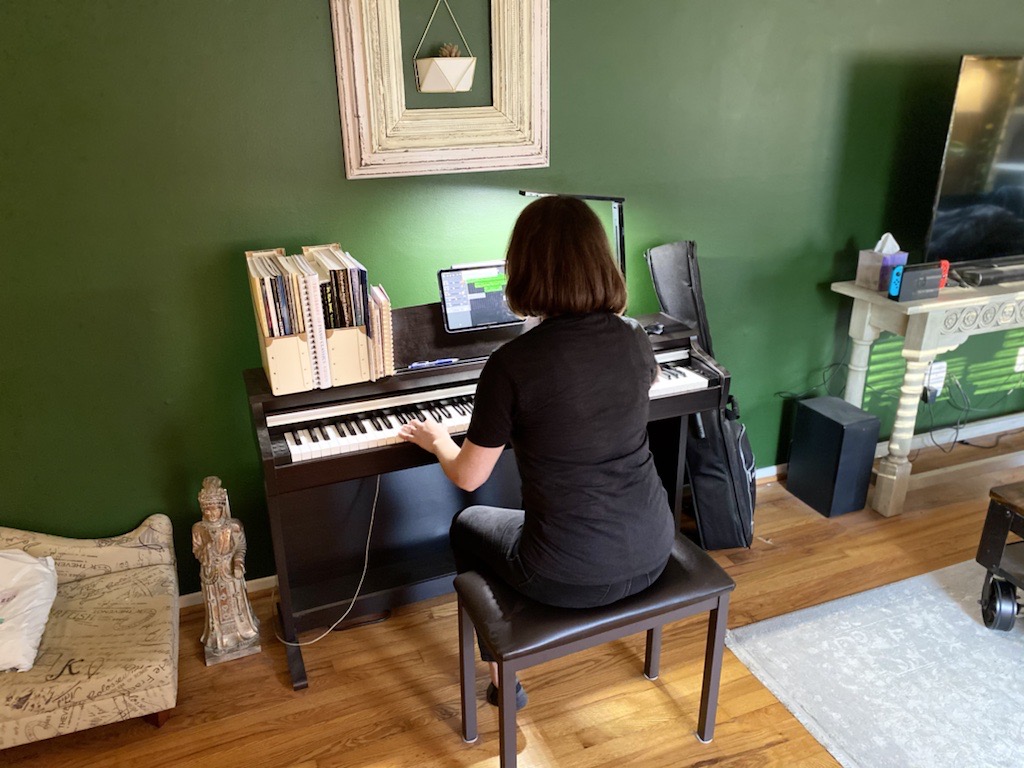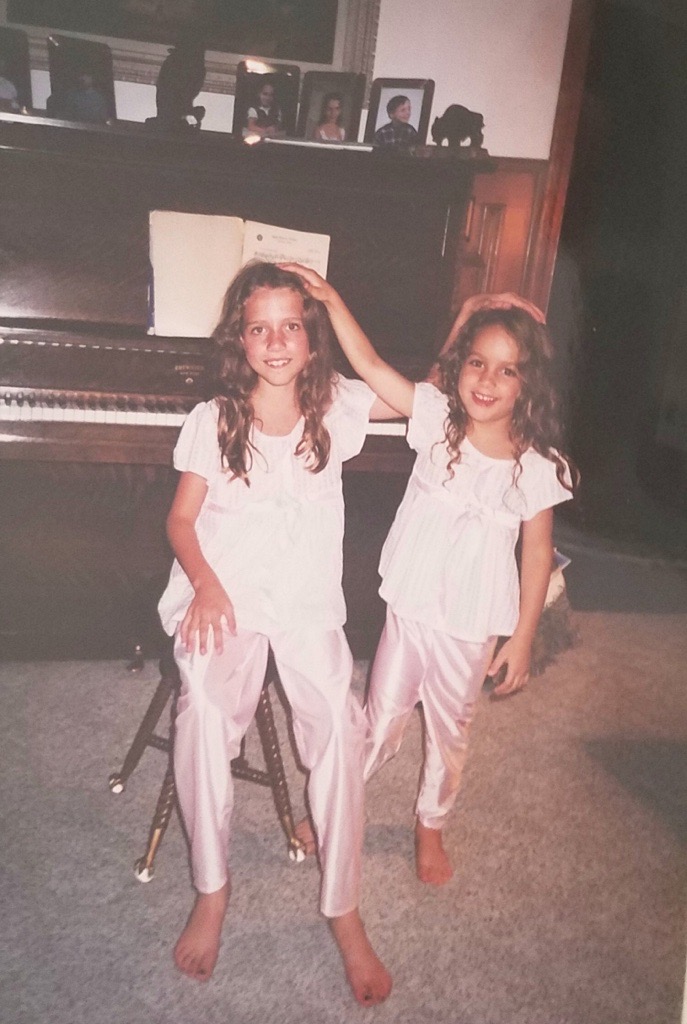CREATING GAME MUSIC FOR LOAM

Written by Annie Eaton
I have played piano since I was a young child. I have been told by my mother that I begged my parents to let me take lessons like my dad, and eventually, they gave in at my young age of 4 years old. My journey with music has ebbed and flowed since that point. I played three different instruments (trombone, percussion, clarinet) in middle and high school band. I participated in the church choir growing up and even entered music writing competitions when I was younger. I also took a music mixing and recording class at Georgia Tech (which was my favorite class of my entire college experience). Unfortunately, I haven’t been able to use my music experience in my professional career, as I have been laser-focused on management and production, but that all changed this year.





My parents finally gave in to my 4 year old self to take piano lessons.


Annie and Holly Eaton
When we decided to make a game, I saw this as an opportunity to get back into music on a deeper level. I brushed up on some old skills, incorporated some new tools, and got to work. Previously, I’ve used Pro Tools (pretty industry standard), but I was having some trouble with my MIDI connection to my computer and decided to take a step back and use GarageBand with my iPad for a quicker setup. MIDI stands for Musical Instrument Digital Interface and is the communications protocol that connects electronic musical instruments to a computer or other device. My parents and husband got me an incredible digital piano for my 30th birthday last year, and it has been put to good use. It’s Bluetooth enabled, and I can easily connect it to my iPad to record instantly.
Now that the tools were out of the way, I had to play with the vibe we wanted the player to feel from the songs. This is still a work in progress, and it’s something we will likely be tweaking until right before game launch. As a team, we discussed that we wanted relaxing but not boring background tracks. In a garden, you want to feel that connection to nature, which can be enhanced or hindered depending on audio. We didn’t want the background tracks to overshadow or distract from the nature sounds in the environment. We also didn’t want them to fade completely in the background because audio has such an important impact on the immersive experience. I continue to iterate, create new samples, and get feedback from my team. Sometimes, my team will pin a particular track to an environment (“this one sounds like a good fit for a cave environment”) or a specific time of day (“this one sounds sleepy and maybe good for nighttime”). I am always taking in feedback throughout the process and iterating to make new and updated tracks.



The larger task at hand is ensuring the track feels right in the game. While I started some of these tracks before we had a playable version of the game, we had a different interpretation of how the songs would fit in. Some of the songs have been completely thrown out because they don’t fit within the feel of the environment when you’re experiencing it in VR. Now that I can play an early version of the game, the process has gotten easier, and inspiration strikes faster. I can sit in the environment, watch the virtual sunrise and set, and write music based on that experience. As more components are implemented into the game, those feelings will only solidify more, and the soundtrack will be more finalized.
This is a very long, multi-month process, and while it’s been fun for me to jump back into. It’s also been a challenge to balance this with other projects and production tasks. I’m excited to hear some of my earlier songs in the game – I suppose it’s equivalent to a music artist hearing their song on the radio. Audio can make or break an experience. It’s often overlooked but can have one of the most powerful effects as far as game polish is concerned. I am excited to continue with this creative outlet, and am grateful for my musical background. It’s never too late to pick up an instrument, so go get started!



